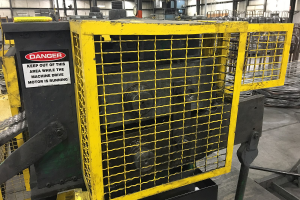OSHA way out of line with new Severe Violator guidelines
OSHA has issued long-awaited additional guidelines for the Severe Violators Enforcement Program and as you might expect from the “New” OSHA, they are way out of line and don’t address a major problem with the program.
The Severe Violator program, of course imposes mandatory reinspections on companies found to “willfully and repeatedly endanger workers by exposing them to serious hazards.” It also subjects companies to inspections at their other locations around the country and effectively imposes a “shaming penalty” by placing the companies on a public list of severe violators.
Under the new guidelines, a company placed on the list of Severe Violators stays on it for three years after final disposition of the citation and OSHA continues to monitor the company’s safety performance over that period. If performance is not satisfactory, the company remains on the list for three more years.
The three-year stay on the list continues, no matter if the company has abated all the problems found in the original citation or taken other steps to improve its safety program.
For construction companies, this can effectively amount to something close to a “death penalty.” A general contractor or project owner, for example, is highly unlikely to do business with a company on the Severe Violator list. And how can OSHA monitor a company’s continuing safety performance at a construction site for three years when most projects don’t last that long?
Guilty until proven innocent
Just as concerning is OSHA’s failure to do anything about its “guilty until proven innocent” approach to the program. Companies cited as Severe Violators are placed on the list prior to the final resolution of their cases. In some cases that means that companies that are ultimately cleared of a citation still have to pay a “shaming penalty.” That can cost them business and do long-term damage to their reputations.
In fact, OSHA reported that in the first two years of the program’s existence 59 companies have been removed from the list after successfully contesting the citations that landed them in the program.
Companies that willfully disregard worker safety need to be forcefully dealt with, of course. But trampling on the due process rights of companies not proven to have done anything wrong is not the way to do it. Nor is imposing a shaming penalty on companies for years after they have done everything possible to set their safety performance right.
Subscribe to updates to Jim Stanley’s OSHA blog.


